Content
 Values 7
Values 7
There are many myths around jewelry with synthesized, that is, artificially grown stones and jewelry with imitation inserts. It's time to part with these delusions!
Subtleties of classification
Gemstones, created not by nature, but by man, can be divided into synthetic (synthesized) and imitations. The first ones have a natural, actually existing analogue and completely coincide with it in color, composition, hardness and other physicochemical properties. For example, rubies, emeralds, diamonds, sapphires are natural and synthetic. Laboratory grown stones gain commercially attractive weight in a matter of months, whereas in nature this process lasts for centuries.
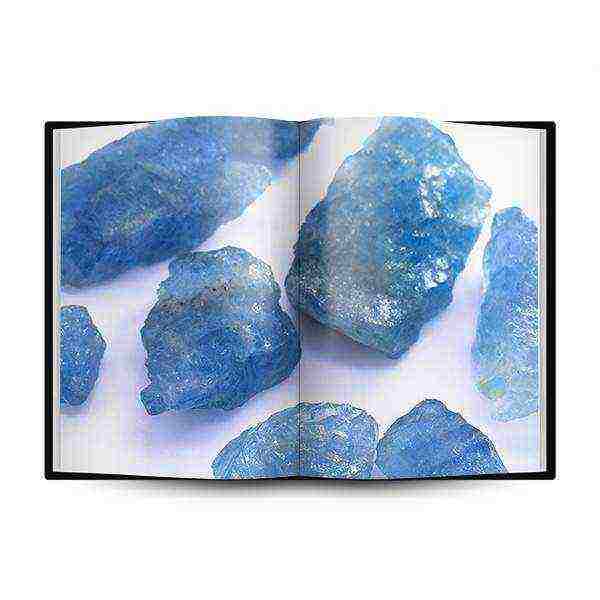
The term "synthetic" in relation to precious stones "from a test tube" is considered unsuccessful in the jewelry environment, since consumers associate it with imitation and even fake. Jewelry with such stones, of course, has a more affordable price than with nuggets obtained in mines and mines, but they cannot be called glass. By law, the manufacturer is obliged to indicate on the product label information that the stone is artificially grown. It is possible to distinguish synthesized stones from natural ones with the help of an examination at a gemological center, but not by eye.
Imitations are made from glass, minerals, metals, ceramics, and plastic. They have no natural analogue, since they were “invented” in laboratory conditions. So, neither Swarovski crystals nor cubic zirconia have a similarity in nature, although they look like rock crystal and even diamonds. Imitating jewelry inserts are used in the manufacture of jewelry and accessories (watches), less often in jewelry.
Synthesized stones: a bit of history
The first synthetic stone - a 10-carat ruby - was obtained in 1891 by the French mineralogist Auguste Verneuil. Using the Verneuil method, it became possible to grow crystals suitable for jewelry use, and in 1910, synthetic sapphire was obtained in a similar way. The artificial emerald, identical to the natural one, was first grown in 1935.
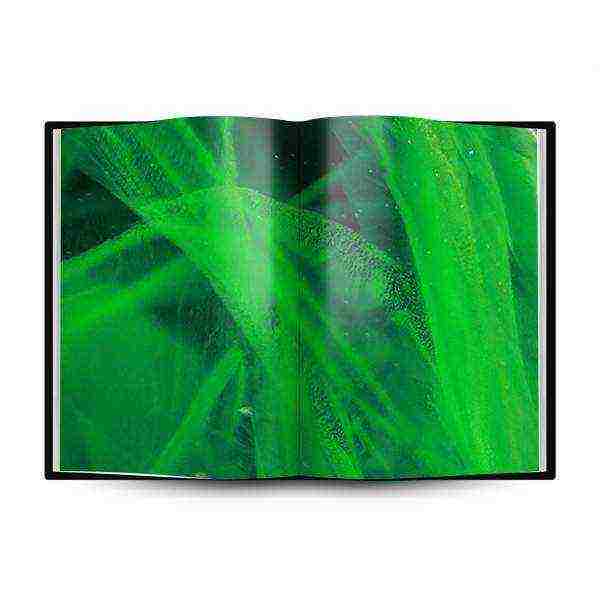
But with the best friends of girls - diamonds - it's not so simple. In 1954, in the laboratory of the American company General Electric, the first artificial diamond "matured", whose growth cycle could be repeated on an industrial scale. But it was a mineral of technical importance, not jewelry. Nowadays, millions of carats of diamonds and diamond chips are annually produced in the world for the needs of manufacturers of various devices, devices, tools.
Gem-quality artificial diamonds were obtained by Herbert Strong and Robert Wentorf (both from General Electric) in 1970, but analogues have not been able to flood the jewelry market today. The process of growing a king of stones is long, complex and costly compared to other laboratory-grade gems. A diamond cut from a synthetic crystal can cost from 50% to 90% of the price of a natural nugget similar in weight and processing, or even exceed it in cost. According to scientists, this direction is the future, but so far there is no need to fear that real diamonds in jewelry will be replaced by grown ones.
Simulation inserts: a bit of history
The most popular imitations of precious and semi-precious stones in jewelry are cubic zirconia and Swarovski crystals (rhinestones). Remember, cubic zirconia is not an artificial diamond! It does not contain the main element for diamonds - carbon, but zirconium oxide is present. Cubic zirconia was obtained in the mid-1960s by scientists from the P.I. Lebedev Physical Institute of the USSR Academy of Sciences (FIAN), after which it is named.

In the 18th century, Georg Strass, a glassmaker and jeweler with German roots, who lived in Alsace, France, invented diamonds using cut lead glass. The surname of the master became the name of his invention: spectacular inserts were named "rhinestones". A century later, the ideas of Strasse were developed by Daniel Swarovski, a hereditary cutter of Bohemian crystal. He improved the composition of rhinestones, the quality of grinding and the durability of the spraying, so that the beauty of the cut, transparency, play of light and brilliance were not inferior to diamonds. In 1895, in Austria, Daniel founded the Swarovski company to sell his products to the whole world and primarily to fashion designers in Paris. The work of the talented cutter, the inventor of the first electric cutting machine (1892), thanks to the works of his descendants, is still flourishing today. Swarovski crystals (rhinestones) have 12 facets, are made of high quality crystal (glass with 32% lead oxide content) with the addition of powder of synthetic and natural stones of gem value.
Why are synthetic stones and imitations needed?
First of all, “substitutes” for precious stones are good because they make jewelry more affordable. Buying a ring with an artificially grown emerald without spending too much for your own budget or saving money for several months for the beauty created by nature is everyone's personal choice. And those who do not need to save up for the purchase of jewelry masterpieces prefer to wear inexpensive copies of jewelry outside the red carpet and gala dinners. An example is provided by Beyoncé, whose engagement ring with an 18-carat diamond is estimated at $ 5 million: for every day, the singer has a copy of this ring, which costs 1,000 times less - $ 5,000.
Also, the "alternative to luxury" fits into the global ecotrend - concern for the preservation of the environment, because the deposits of some precious stones these days are close to depletion.

And finally, it is much easier for a grown stone to obtain ideal characteristics in terms of carat weight, color, light refraction, the absence of any defects - inclusions, microcracks, and so on. There are laboratory centers for the production of synthetic stones in Russia, China, India, USA, Sweden and other countries of the world.
Since then, as people understood the nature of precious stones, learned their composition and discovered the conditions of education, they strive to become like nature and reproduce stones with their own hands with the help of more and more new knowledge and technologies, and today they successfully succeed. Now people are able to make very many types of jewelry and jewelry and ornamental stones, which could not but affect the attitude towards minerals and prices, although the reason for the production of most stones is primarily the requirements of the industry, and only secondly - the demands of the jewelry market. However, the passions around natural minerals and their artificially grown analogs do not subside: there are lovers of natural stones who consider the grown stones to be something fake, a kind of surrogate, and there are those who like any mineral, whether it is grown by man or nature.
In order not to get confused, you should immediately decide: there are imitations, and there are synthetic analogs of natural stones. Imitation - This is a material similar to natural stones in appearance and in some properties; imitations can be both artificially created minerals and natural, natural, as well as materials that have nothing to do with minerals (glass, plastics, etc.) or are combinations of all these materials. For example, natural colorless zircon, artificially created cubic zirconia (which is often called zirconium in the trade), and simple glass, which does not even have a crystalline structure, can serve as imitations of a colorless diamond. If the seller passes off these materials as a diamond, they can be considered fakes. Synthetic analog - a mineral created by man, that is, artificially grown (for example, a synthetic diamond). Its characteristics correspond to the chemical composition, physical and optical properties of a diamond, and sometimes even surpass them, and its origin can be established only in a gemological laboratory, and with some stones it is difficult - they are so close to natural ones. In the catalog of the "Gems Gallery" you can see jewelry, in the descriptions of which the definitions "synthesized ruby", "synthesized opal", etc. are used. - these are the grown stones.
Perhaps, it cannot be attributed to one or the other category. refined materials - natural minerals, which have improved (in fact, changed) texture and / or color. This can be done by heating, X-ray irradiation, impregnation with resins, polymers, dyes, etc. For example, fortified turquoise is a natural, but very loose and soft turquoise, unsuitable in this form for inserts into jewelry, which is strengthened by impregnation with special resins and sometimes dyes. It is clear that in this form, turquoise can no longer be considered completely natural, natural.
This article will focus only on man-grown stones - we will look at some artificially created stones used for inserts into jewelry. Diamond
“I knew it would take ten or even twenty years, which could take away from a person all his strength, all his energy, but even then the game was worth the candle,” said the hero of HG Wells's story “The Man Who Made Diamonds ". Usually, the synthesis of crystals of minerals is associated with their demand in industry, in their application in high-tech technologies, but the stone itself attracts people, and the ability to repeat nature - even more so. diamond was one of the first such minerals. The first attempts to obtain diamonds were registered at the end of the 19th century, but they were unsuccessful. For the first time artificial diamonds were synthesized in Sweden and the USA in 1954 (General Electric company), and officially six years later - in the USSR. However, back in 1939, professor-physicist Ovsey Ilyich Leipunsky from the Institute of Chemical Physics described a method for producing diamonds, which involved the use of high pressures and temperatures of 1500-3000 degrees. Under these conditions, the loose crystal lattice of graphite can transform into a dense packing of the diamond structure. Such conditions were technically impossible at that time, but Leipunsky's work was studied by many specialists, including the Swedes; they later used the method described by O. I. Leipunsky: pressure, temperature, as well as the addition of iron and some other materials to graphite. This facilitates the synthesis process, carbon becomes mobile and forms the diamond lattice faster. The sizes of crystals obtained at that time did not exceed only 0.8 mm, therefore they were used as abrasives. Large diamond crystals learned to synthesize later, this procedure is much more complicated and expensive. It is especially costly to synthesize large, more than one carat, and precisely colorless diamond crystals, therefore their mass production is impossible, and the market contains mainly stones weighing one carat or less.
One of the world's largest producers of synthetic diamonds and polished diamonds, the Belarusian enterprise "Adamas BSU", uses the BARS method (pressless apparatus "Razreznaya Sphera") here. The basic technology based on this method was developed back in the USSR at the very beginning of the nineties; the technology stands for "a method of crystallization of diamond from a carbon solution under conditions of a temperature gradient in a metal melt based on iron and nickel using high pressures."It will take about a hundred hours to synthesize a diamond weighing one carat in the BARS apparatus, which will amount to six cycles per month, that is, six carats. Unfortunately, only mass production of bright yellow crystals is possible. There are similar installations in Russia, but they do not work for the jewelry market. "Adamas BSU" produces both technical raw materials and materials for the jewelry industry, and the share of the latter is steadily growing. This is due to a combination of reasons: a decrease in the production of natural diamonds, a constant increase in demand for polished diamonds, the decision of leading gemological laboratories, for example, the GIA (Gemological Institute Of America) to accept synthetic diamonds for certification, the development of technology that makes it possible to obtain crystals of ever larger size and more and more fancy colors while reducing the amount of "blank" synthesis. The market is gradually getting used to synthetic diamonds, and Belarus even adopted a special national program for the development of synthetic diamond production. However, there is no need to talk about cheap diamond jewelry yet. Corundum (sapphire, ruby)
Some of the most outstanding achievements of science and technology, as a rule, are marked by the use of crystals of minerals, their unique properties: optical, piezoelectric, semiconductor and others. The very first corundums in Russia were also initially synthesized for the purpose of using them in science: in precision instrument making, watch industry, etc. In 1936, the first installation in Russia for growing corundum was put into operation, and soon a permanent production was established. The first industrial method for obtaining corundum (as well as spinel) and still the most widespread is the Verneuil method.
French chemist Auguste Verneuil began his experiments on growing minerals at the end of the 19th century, but 1905 is considered the official year of birth of the first synthetic Corundum. The method, in short, is as follows: alumina powder is fed together with oxygen into a burner fire, which in turn is fed with hydrogen. A hydrogen-oxygen flame of about 2050 degrees melts the powder, and the melt flows down onto the prepared crystal carrier. When solidified, the melt does not form a mineral crystal in the usual sense, but the so-called mineral bule - a round-shaped rod. Today it is possible to grow boules up to 5-8 cm in length and 2 cm in circumference (40-45 grams = 200-250 carats) in just a few hours. To obtain red corundum (ruby), add chromium oxide to the alumina powder; blue (sapphire) - add iron oxide and titanium. Nickel will stain Corundum yellow. Star Rubies and Sapphires can also be grown. A similar method has been obtained since the 1920s. spinel; for this, magnesium oxide and aluminum oxide are used. Spinels usually impart a sapphire blue, beautiful aquamarine or green coloration. "Gallery of Gems" can offer jewelry lovers of precious stones jewelry with synthetic ruby and high quality sapphire.
Two hundred tons of synthetic corundum and spinel are produced annually all over the world for various needs. Faceted, they are indistinguishable without special equipment from natural gemstones and are gaining more and more space under the sun. But can they finally replace natural rubies and sapphires? Alexandrite
Alexandrite is a type of chryso beryl. This rare and very expensive stone is classified as precious and has a unique effect: in daylight it is green, and in artificial light it turns red. The closest imitation of Alexandrite in properties and at the same time the most inexpensive is the same Corundum, only with the addition of vanadium and titanium in the synthesis process, which gives the stone an Alexandrite effect with an intense reverse from a weak bluish-greenish-gray to a deep red-violet, amethyst color. Synthetic alexandrite itself is also grown; it is the most expensive synthetic analogue after diamond. Information about the successful synthesis of an analogue of chryso beryl, alexandrite, dates back to the second half of the 19th century.
In the USA, in 1964, an industrial method of obtaining alexandrite was tested, and since 1972, the company "Creative Crystals" (g.Saint-Ramon, Danville, Calif.) Grows alexandrite crystals from a solution using a flux method. A solution of beryllium and aluminum oxides, when cooled, serves as a "nutrient medium" for Alexandrite crystals, which grow from seven to nine weeks. In this way, the most beautiful crystals of alexandrite are obtained, which are difficult to distinguish from the famous Ural gems that once made the glory of Russian gems. The Japanese, on the other hand, produce Alexandrite by the Czochralski method (pulling the crystal out of the melt) and call their product "inamori" and "kresent-vert": it also has the effect of a cat's eye, and its color changes from greenish-yellow in daylight to red-violet when artificial ...
In Russia, alexandrite has been grown since 1980 in Novosibirsk, at the Design and Technology Institute of Single Crystals. It goes for both technical and jewelry purposes; some crystals weigh half a kilogram. Although the synthetic analogue corresponds to natural Alexandrite both in chemical formula and in most properties, natural Alexandrite remains unsurpassed in beauty. It looks great in gold, as, for example, in the turquoise earrings from the Gems Gallery collection.
Natural Alexandrite (like any other natural stone) has inclusions, cracks and other defects that are invisible to the eye, which do not reduce the aesthetic effect, but very much interfere with the use of crystals in precision instrument making, in particular, in Alexandrite lasers in medical cosmetology and eye microsurgery, therefore synthetic stones, which do not have defects and have all the desired properties, are ideally suited for these purposes. Emerald
Modern technologies make it possible to grow defect-free and large enough Emerald crystals, which is very rare for natural ones. By and large, grown Emeralds are no different from natural ones, except that they are too perfect. Synthetic Emeralds were obtained even before World War II, after which research in this area resumed with renewed vigor. Americans from the Chatham company were among the first to establish industrial synthesis of synthetic Emeralds from solutions in a melt. Of course, in the USSR, it was decided to create Emeralds, only by "our" method, using a new technology. Now this technology, created in the 1970s by Novosibirsk scientists, is known all over the world, and the Emeralds created with its help are called Russian Emeralds. We are still ahead of the rest of the world: the Tyrus company, which was founded in 1989 on the basis of the Joint Institute of Geology, Geophysics and Mineralogy of the Siberian Branch of the USSR Academy of Sciences, by the same Siberian creators of Emeralds, is the market leader in artificial precious stones. Only in "Tyrus" and nowhere else in the world is another variety of beryl grown besides Emerald - aquamarine. For the synthesis of stones, a method is used that is closest to the natural one - hydrothermal, in an autoclave, using high pressures and temperatures. The process, by and large, is no different, and instead of thousands of years, it takes only two or three months.
However, for growing stones, autoclaves, melts and high temperatures are not enough; talent, intuition, and much more are needed, which can be called a gift to do just this business. After all, if you select the optimal composition of the charge (a mixture that will serve as a material for the growth of crystals) simply by experience, your whole life will go away, and even knowledge will not always help, rather, a combination of qualities that make a person a Creator. Garnet
Garnets are crystals with ideal properties for use in lasers; they began to grow in order to obtain defect-free samples of the desired properties. Almost by accident, they came to be used in the jewelry industry.In the 1960s, the first samples were obtained in the United States, and by the end of the sixties, synthetic Garnets entered the jewelry market. Unlike natural ones, synthetic Garnets can be colorless. This is another illustration to the question of grown and natural stones, the perfection of the former and the imperfection of the latter: an ideal pyrope in nature should have been colorless, but because of the "extra" impurities of iron, it is as we know it - fiery red, and not is different.
Synthetic Garnets (Garnets) are yttrium-aluminum (YAG), gadolinium-gallium (GGG) and yttrium-ferruginous (IIG). Colorless and colored yttrium-aluminum garnets with high hardness (8.5 on the Mohs scale) and a good refractive index, which gives them shine and strong play, turned out to be the most suitable for inserts into jewelry, both in terms of physical and optical properties and economically. YAG is grown in various ways, mainly by the Czochralski method, which gives large crystals that lend themselves well to polishing.
Colorless Garnets are sometimes substituted for diamonds. Even in London, which is famous for its conservatism with regard to jewelry, synthetic Garnets began to be sold in the early seventies as adequate substitutes for diamonds. This, in particular, was facilitated by the famous actress Elizabeth Taylor and the sensational story with her pear-shaped diamond. In 1969, Richard Burton (who starred with Taylor in "Cleopatra" and married her twice) gave her a pear-shaped diamond weighing 69.42 carats. The actress usually wore this beautiful natural stone as a pendant, but insurance for one evening cost a thousand dollars. Then Taylor ordered a copy of a synthetic Garnet diamond, close to diamond in properties, for three and a half thousand dollars. It was not difficult to distinguish the copy when it was lying next to the diamond, but individually it could only be done by an expert. And so it happened that fear of robbers, and maybe even of insurers, contributed to the popularity of synthetic Garnets in general. In the catalog of the "Gallery of Gems" there is a silver ring with fiery red synthetic Garnets that can outshine even small natural rubies. Quartz (rock crystal, amethyst, citrine, ametrine)
The production of Quartz in comparison with the same diamonds or Emeralds does not cause much difficulty. It is grown hydrothermally in steel autoclaves; the growth rate of crystals is up to 0.5 mm per day. Synthetic Quartz can be given any shade, both imitating natural and fantasy, not found in nature. For example, bright blue Quartz is made by adding cobalt; iron provides citrine color; the more it is, the brighter the color, to orange-red. Black morion can be grown by increasing the concentration of aluminum, and rauch topaz - smoky quartz - is also obtained. One of the most popular varieties of Quartz - amethyst - is obtained after ionizing radiation of synthetic smoky Quartz. It is extremely difficult to distinguish it from natural, which is why it is very popular. Synthetic amethyst is most often very bright and clean, without defects and irregularities, uniform deep color; The stones can be very large, but sometimes their color changes under sunlight and artificial light, demonstrating a kind of Alexandrite effect. amethyst brushes are grown in our suburbs, but as long as there is inexpensive African raw materials, there is no need for mass production of amethyst and amethyst brushes. ametrine (amethyst-citrine), a polychrome mineral with two zones of color - purple and yellow - was first found in Bolivia, so its second name is bolivianite. But you can grow ametrine artificially; it will cost an order of magnitude lower, and the owner will enjoy no less than the natural one, which, by the way, in faceted form can be found in the collection of precious stones and crystals of the "Gallery of Gems". Opal
Synthetic opal, albeit with a stretch, can be called an actual opal: it also has a layered structure, various colors and a play of colors, for example, white opals with multi-colored flashes, cut in the form of pearls and adorned the ring from the catalog of the "Gallery of Gems".Like natural opal, synthesized opal also consists of silicon layers. For a very long time it was believed that opal could not be obtained artificially; the study of the structure of this amazing mineral nevertheless made it possible to understand that synthesis is possible. The first patent for the manufacture of noble opal was received by Australian mineralogists A. Gaskin and P. Darre, and in 1973 the Swiss jewelry firm Pierre Gilson began selling a wide variety of noble synthetic opals, which were in no way inferior in color and strength of opalescence to natural stones.
High-quality synthetic opals are also made in Russia. Even when comparing natural and artificial opal, it is difficult to understand which of them appeared in the laboratory. In addition, natural noble opal is very expensive, especially black, and incredibly capricious in storage and wearing, and grown stones allow you not to be afraid of any accidents. Turquoise
The aforementioned company of Pierre Gilson in the aforementioned 1972 also received an artificial turquoise, the closest to natural of all previously obtained, and therefore suitable for inserts into jewelry. Such turquoise is very uniform, has a wonderful turquoise color, and cabochons made of such a material are difficult to distinguish from natural ones, even in a professional laboratory. All indicators (density, hardness, etc.) coincide, and even the best Iranian turquoise in the world is indistinguishable from artificial. In Russia, both homogeneous blue and spiderweb turquoise are obtained, with a pattern of dark veins. You can try comparing natural turquoise beads and a gold ring with synthesized turquoise from the Gems Gallery collection to see how similar the materials are. Pearl
Pearls have a special position among minerals: firstly, it is a mineral of organic origin, and secondly, artificial, or cultured, pearls, in fact, differ from natural ones only in that they grow in the shell of a mollusk under human supervision. Back in the 19th century, the Chinese and Japanese began to cultivate pearls, therefore it was in the East that a special attitude towards such pearls developed and their pearl traditions developed. The molluscs that are able to grow a pearl in their mantle are Pinctada Martensi, Pinctada Maxima, and Pinctada Margaritifera, which grow up to thirty centimeters in diameter. This latter gives Black, Gray, Bluish, Green and Bronze Pearls.
The method of obtaining pearls is quite simple: the pearl shell is first grown in more fresh than sea water, in special fenced off areas to avoid attacks by predators; then, three years later, a ball of natural mother-of-pearl (or a piece of mantle) is placed inside the shells; further pearl mussels grow from one and a half to eight years (on average, two to three years) in more salty water further from the coast. They are protected and looked after. The whole world is famous for the Japanese cultured Akoya pearls, which have excellent luster and various shades. This is a classic of cultured Pearls. Akoya pearls are produced not only in Japan, but also in Korea, China and Sri Lanka and can be white, yellow, pink, silver, champagne, green, cream.
It is possible to diagnose cultured pearls using ultraviolet rays: it will emit a greenish light, while natural pearls will emit blue. "Gallery of Gems" offers several shades of Pearls: white (classic beads of 45 cm, ideal for a round and high neck line of clothing), cream (earrings), gray (rings), collections are constantly updated with new models with different colors.
It is interesting that in Russia there were attempts to grow pearls: the Stroganov merchants, back in the 17th century, set up experiments in Solvychegodsk, where a pond called Pearl was preserved. Cheslav Chmielewski grew pearls up to 5 mm in diameter in the east of Russia at the beginning of the 19th century. And the victory is awarded ...
As it turns out, there are not so many synthetic analogs of jewelry stones; hardly two dozen, but this is quite enough for the jewelry market, especially since there are much more imitations of stones, and they are also successfully sold, however, the buyer is not always aware of this. And it is much more pleasant to buy a ruby, albeit synthetic, than a "sandwich" made of glass, Quartz and colored glue, and even more expensive. Natural stones, of course, will never lose their buyer; they are valuable because each of them is unique and has been growing for hundreds, millions of years. All impurities, defects, inclusions and heterogeneities only add individuality to them, which explains, in the end, their attractiveness and desire to admire them. But many of them, as a rule, are the most beautiful, difficult to obtain, and even more difficult to buy: the price for the love of beauty is too high. In this respect, we can be grateful to the grown stones: flawless, they invariably follow one goal - to be even better, even more beautiful.
In the modern jewelry industry, various methods of synthesizing precious stones and growing jewelry crystals have been successfully developed. All of them are tied to the phase state and composition of the medium. In a very general way, it can be said that crystals are grown from:
- melts (pure substance)
- solutions
- gas environment
The synthesis process can proceed both as a result of the transformation of the initial solid phase, and by the formation of a solid phase from liquid and gaseous. The most famous crystal synthesis methods are
- melt (methods of Verneuil, Czochralski, zone and skull melting)
- solution-melt (methods of flux, hydrothermal synthesis and synthesis of gem-quality diamonds at high pressures)
Gemological Center Faculty of Geology, Moscow State University, on its website, provides a detailed description of the process and technologies for the synthesis of jewelry stones.
In general, we can say that the basis for obtaining synthetic jewelry crystals is the processes crystallization, which, to one degree or another, we all studied at school in chemistry lessons. In fact, these are heterogeneous chemical reactions in which single crystals or their polycrystalline aggregates are formed.
The crystallization process consists of two key stages: first, the "center of the crystal" emerges, then further growth occurs.
How does a gemstone crystal grow?
The crystal has a spatial lattice, which "overgrows" layer by layer with the atoms of a supersaturated solution. The crystal growth rate is regulated by the temperature of the medium, pressure, and the rate of solution supply. If the growth rate is low, so-called “growth zoning” (similar to straight or curved lines) can form inside the crystal. In crystals with a rich color, zoning can be color (that is, some faces will take on more impurities than others).
In addition, liquid and solid inclusions can “settle” on the crystal faces. The quality of a grown crystal often depends on the speed of its growth. Slow growth is more in line with the natural pace. With a fast stimulated growth, more inclusions remain on the faces, and the crystal can lose transparency.
Industrial methods of growing gemstones
The era of industrial synthesis of precious and other jewelry stones was discovered in 1896 by a French scientist Auguste Verneuil... It was he who designed the first furnace with a burner based on oxygen and hydrogen, in which he received the first artificial ruby. Below in the table you can see a list of the most famous and used methods of growing stones. Stones of the same type, obtained by different methods, may have some differences.
It is important to note that in addition to growing single crystals, there are methods for synthesizing polycrystalline structures that make up such stones as turquoise and malachite.Their own rather complex methods are also used to obtain a noble opal, which has a unique color effect (iridescence). Most of these methods are trade secrets of the developers.
| SYNTHESIS OF CRYSTALS FROM MELT | |
| Verneuil's method | Ruby, sapphire, star corundum, spinel, rutile |
| Czochralski method | Alexandrite, ruby, sapphire, spinel, YAG (yttrium aluminum granite) GGG (gadolinium gallium garnet) |
| Stepanov's method | Corundum (multi-colored), leucosapphire, YAG |
| Bagdasarov's method (zone melting) |
Rubies, leucosapphire, YAG |
| Garnissage method (cold crucible) |
Sapphire, cubic zirkonia |
| SYNTHESIS OF CRYSTALS FROM SOLUTIONS | |
| Flux method | Emerald, ruby, sapphire, spinel, alexandrite, YAG, YGG |
| Hydrothermal method | Quartz and all its varieties, emerald, ruby |
| Synthesis from low-temperature aqueous solutions | Malachite, opal |
| SYNTHESIS OF GAS-PHASE CRYSTALS | |
| Method of gas transport reactions | Chrysoberyl, phenakite |
ALL STONES: CATALOG
JEWELRY STONES: REFERENCE
SYNTHETIC JEWELRY
Types of stones by origin (natural, imitation, synthesized, refined)
What determines the value of gemstones?
How to determine - a synthetic gemstone or natural?
Imitation of natural stones and its methods
Refining of precious stones
Cubic zirconias, rhinestones, Swarovski crystals
Jewelry has always been loved and revered by both women and men. At all times, the presence of jewelry, their originality and value determined the position of a person in society, emphasized his status and wealth. This is explained by the high price of precious stones and jewelry, which only increases over the years. A grandson can sell great-grandmother's diamonds for fabulous money, provided that they are real, i.e. are of natural origin.
Most people in our country sincerely believe that precious (semi-precious) stones are set in all jewelry made of gold. This is the difference between real values and jewelry, the destiny of which is to shine with cut glass. However, everything is not so simple. Already two centuries ago, scientists outwitted Mother Nature and learned how to create imitation of precious stones - their synthetic counterparts.
"Glass" or "stone"?
The process of growing stones in laboratory and production conditions is rather complicated and laborious, therefore, such stones cannot be called glass, but, alas, they also have no right to bear the name “precious stones”.
The history of the creation of artificial gemstones
The desire to obtain gold and precious stones from scrap materials has been inherent in humanity for a long time. Dreams of gratuitous wealth are reflected in fairy tales and legends, in which a person suddenly got the opportunity to turn any objects around him into gold. And despite the fact that such stories never ended with anything good, the thirst to match nature in opportunities and get alchemical stones in the laboratory did not leave the mind and heart of scientists.
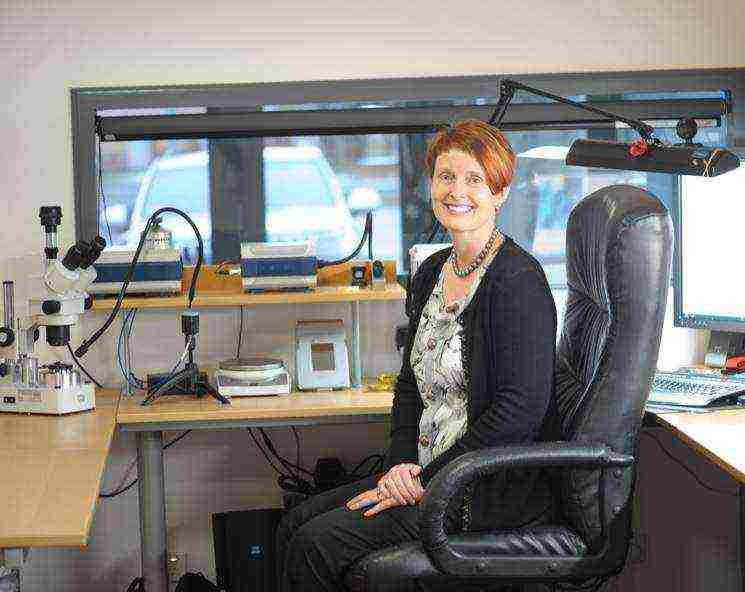
Not always successful attempts are honest: the history of artificial stones began in the eighteenth century, when the Austrian Georg Friedrich Strass found a way to sell glass under the guise of noble diamonds. On the banks of the Rhine River, Strass discovered pieces of minerals that, under certain lighting conditions, looked like diamonds. By processing, cutting and introducing lead salts into the glass, artificial stones were obtained, very similar to real ones, which were sold by a skilled businessman as precious. In order to make the "jewels" shine more strongly, the finest metal spraying was applied to their surface. The great strategist was not only not punished for selling counterfeit stones, but, on the contrary, he was granted the title of jeweler in the king's palace, and glass jewelry was named in his honor - rhinestones.

Today, the most famous rhinestones in the world are called "Swarovski Crystals". It is very symbolic that they are made in the homeland of Strass - in Austria. The main materials for the manufacture of Swarovski Crystals are crystal, synthetic and precious stones of natural origin, so they have a fairly high cost.
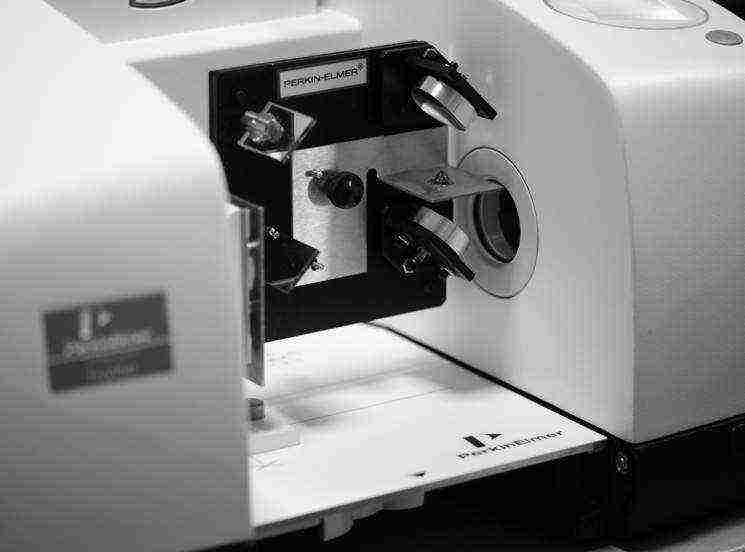
As for the stones, the first stone, grown by man, like an exotic flower, was revealed to the public back in 1891. Before that, repeated attempts were made to grow stones. However, the results had such microscopic dimensions that it was not necessary to speak of their use in industry (for example, in jewelry). The "Siamese" stones, which were obtained by alloying fragments of stones of natural origin, were not successful either.
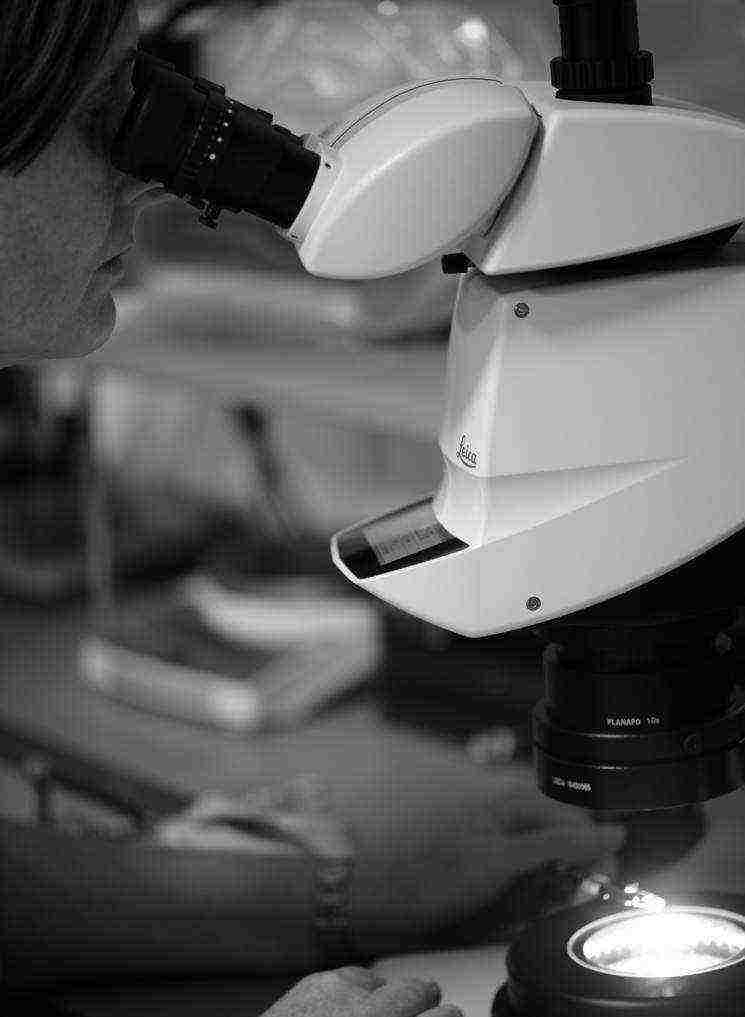
The artificial ruby, obtained in the laboratory, reached ten carats, and was created by the Frenchman Auguste Verneuil. All the equipment for obtaining stones was invented by him and made it possible to obtain pure synthetic rubies two to three times larger than the sample obtained in a few hours. Moreover, unlike natural stones, they had no inclusions or defects, were clean and transparent. A year later, the same scientist obtained the first corundum of synthetic origin. The raw material for it was purified aluminum oxide.
Ten years after the first success, the research was completed, and the equipment for growing synthetic stones was successfully introduced into production. Verneuil's method turned out to be simple and reliable, it made it possible to grow rubies of the required size and pushed scientists to create other synthetic stones.
The twentieth century picked up the baton, additional methods of growing stones "in test tubes" were discovered. Their assortment expanded, and such stones became very popular with jewelers, because at a lower cost it was possible to get a larger stone and purity unprecedented for natural precious stones.
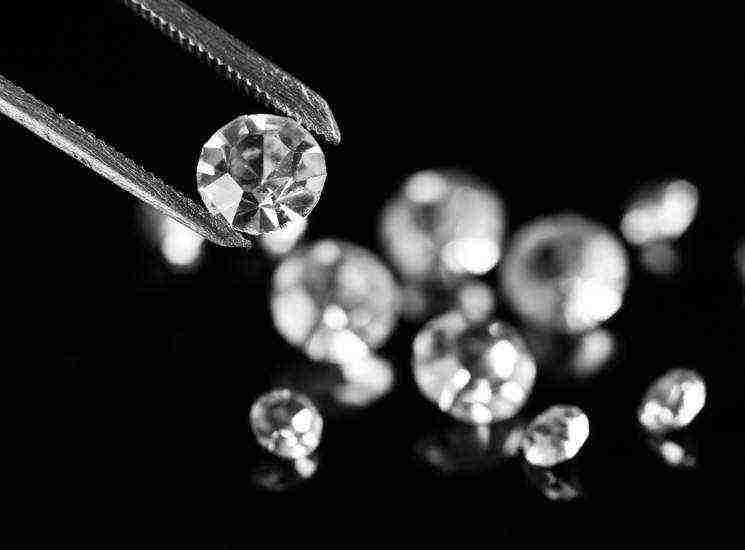
In the Soviet Union in the middle of the last century, synthetic stones were in great demand, they can be found in many jewelry of that era: bright red, glowing rubies and blue transparent sapphires, grown using the method proposed by a French scientist. Besides them, other synthetic stones are known: alexandrite, emerald, quartz and diamond. And the cubic zirconia, which is often found beloved by ladies, imitating a diamond, has no analogues in nature at all - it is 100% the merit of scientists.
How to distinguish a gem
An ordinary man in the street, neither at first glance, nor at the second, nor even at the third, will not be able to recognize himself which stone is set in a frame - synthetic or precious (stones of purely natural origin are called precious, after all). In the EU countries and in the USA, the rights of buyers are very strictly observed, and the product tag necessarily contains information about the origin of the stone. If the stone is inherited and there is no data about it, except for family legends, then it is worth contacting a serious jewelry workshop or laboratory for a comprehensive analysis. With the help of special equipment, specialists will be able to answer your question. But even if the stone is not natural, but synthetic - do not rush to get upset, it still cannot be considered glass, suitable only for cheap jewelry. Synthetic stones make it possible to make the cost of products cheaper, they allow more economical use of minerals - diamonds, deposits of precious stones and, who knows, maybe after some fifty or a hundred years, our descendants will seriously concern themselves with the preservation of nature, ecology, and the earth's interior, and synthetic stones will be at a huge price and trending.


